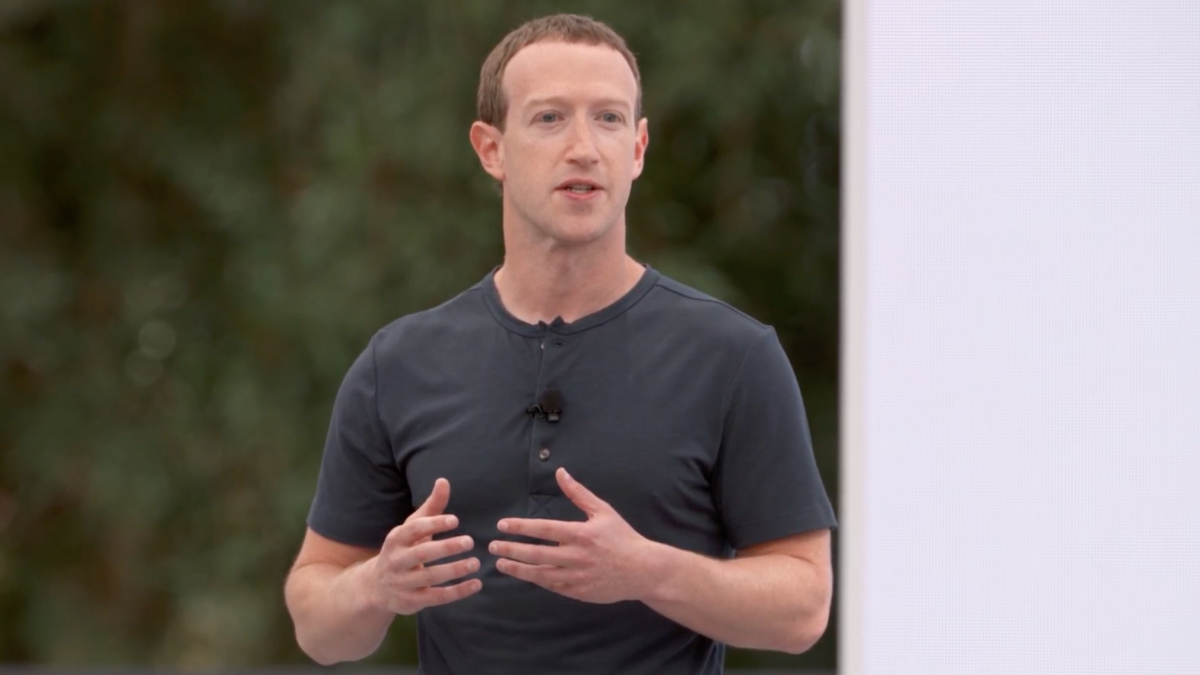BBC Mexico correspondent

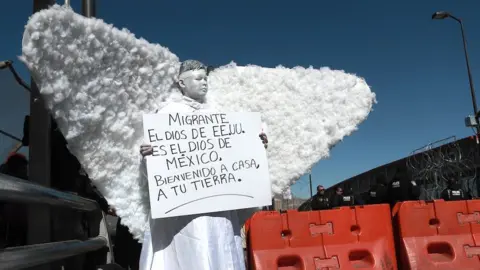 Getty Images
Getty ImagesIn the shadow of a vast cross, workers and construction workers in the Mexican border city of Ciudad Juarez are building a small city of their own. Tent city.
On the old fairgrounds, under an altar created for a Mass by Pope Francis in 2016, the Mexican government is preparing for thousands of deportees expected to arrive from the United States in the coming weeks.
Juarez is one of eight border sites along the 3,000-kilometre (1,900-mile) border where Mexico is bracing for the expected influx.

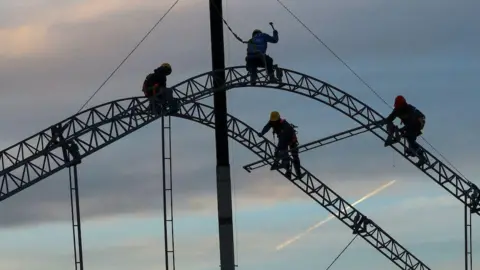 Reuters
ReutersMen in boots and baseball caps climb atop a vast metal structure to excavate dense white tarps, erecting a makeshift shelter to temporarily house men and women just like themselves.
Ordinary laborers, domestic workers, kitchen staff and farm hands are likely to be among those sent south soon, once what President Donald Trump calls “the largest deportation in American history.”
In addition to protection from the elements, deportees will receive food, medical care and help obtaining Mexican identity documents, under a deportation support program that Claudia Sheinbaum’s administration calls “Mexico is Your Dying.”
“Mexico will do everything necessary to take care of its citizens and will allocate everything necessary to receive those who are repatriated,” Mexican Interior Minister Rosa Iquila Rodriguez said on Trump’s inauguration day.
For her part, President Sheinbaum emphasized that her government will first attend to the humanitarian needs of those who return, saying that they will qualify for her government’s social programs and social pensions, and will immediately be eligible for work.
She urged Mexicans to “stay calm and keep a cool head” on relations with President Trump and his administration more broadly — from deportations to the threat of tariffs.
“With Mexico, I think we’re doing well,” President Trump said in a video address to the World Economic Forum in Davos this week. The neighbors may find a workable solution on immigration acceptable to both – President Sheinbaum said the key is dialogue and keeping channels of communication open.

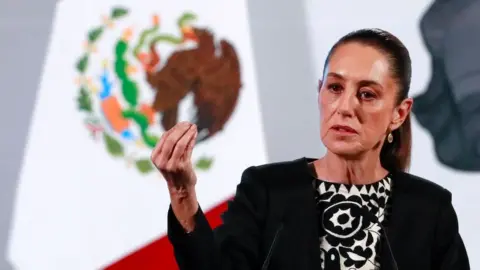 Reuters
ReutersDespite this, though, she recognizes the potential strain of President Trump declaring a state of emergency at the US border on Mexico.
An estimated 5 million undocumented Mexicans live in the United States, and the prospect of a mass return could quickly saturate and overwhelm border cities like Juarez and Tijuana.
It’s an issue that worries José María Garcia Lara, director of the Juventud 2000 migrant shelter in Tijuana. As he shows me around the facility, which is already nearing capacity, he says there are very few places that can fit more families.
“If we had to, we could put some people in the kitchen or the library,” he says.
There came a point, though, where there simply wasn’t any space left – and donations of food, medical supplies, blankets and hygiene products would be stretched.
“We are being hit on two fronts,” Garcia says. “First, the arrival of Mexicans and other migrants fleeing violence.”
“But also, we will have mass deportations. We don’t know how many people will encounter the border that needs our help. Together, those two things can create a huge problem.”

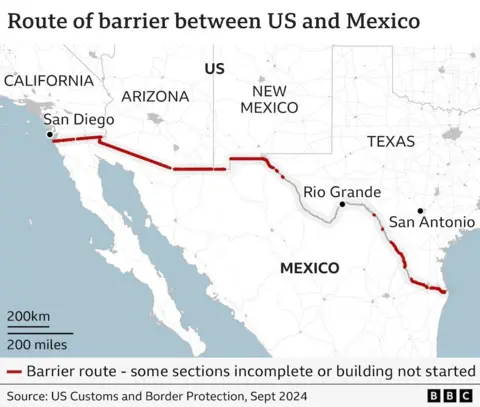
Moreover, another key part of Mr. Trump’s executive orders includes a policy called “Remain in Mexico” under which immigrants awaiting dates to make their asylum cases in a U.S. immigration court are required to remain in Mexico before those appointments.
When “Remain in Mexico” was in place, during Trump’s first term and under Andres Manuel Lopez Obrador’s presidency in Mexico, Mexican border cities struggled to deal with it.
Human rights groups have also repeatedly denounced the risks migrants are exposed to by being forced to wait in dangerous cities where drug-related crime is common.
This time, Sheinbaum made clear that Mexico had not approved the plan and would not accept any non-Mexican applicants from the United States as they awaited their asylum hearings. Clearly, “remain in Mexico” only works if Mexico is willing to comply with it. So far, he has drawn a line.

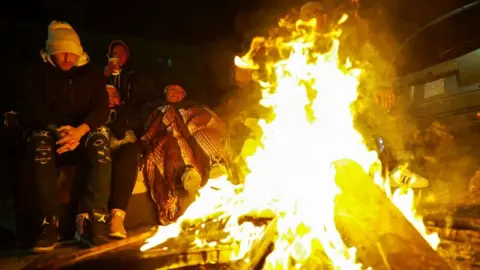 Reuters
ReutersPresident Trump has deployed about 2,500 troops to the US southern border where they will be tasked with carrying out some campaign logistics.
In Tijuana, meanwhile, they help Mexican soldiers prepare for the consequences. Authorities have prepared an event center called Flamingos with 1,800 beds for returnees and troops bringing in supplies, setting up kitchens and showers.
As President Trump was signing executive orders Monday, a minivan swept through the gates at the border crossing between San Diego and Tijuana carrying a handful of deportees.
A handful of journalists gathered to try to talk about, ostensibly, the first deportation of the Trump era. It was just a routine deportation, though, that had probably been in the pipeline for weeks and had nothing to do with the documents Trump was signing in front of a cheering crowd in Washington, D.C.
However, symbolically, when the minibus caused the media to wait towards a government-run shelter, it was the first of many.
Mexico will get to work receiving them, sheltering them and finding them a place in a nation some have not seen since they left as children.
https://ichef.bbci.co.uk/news/1024/branded_news/11b4/live/84c684e0-da56-11ef-bc01-8f2c83dad217.jpg
2025-01-26 00:20:00

